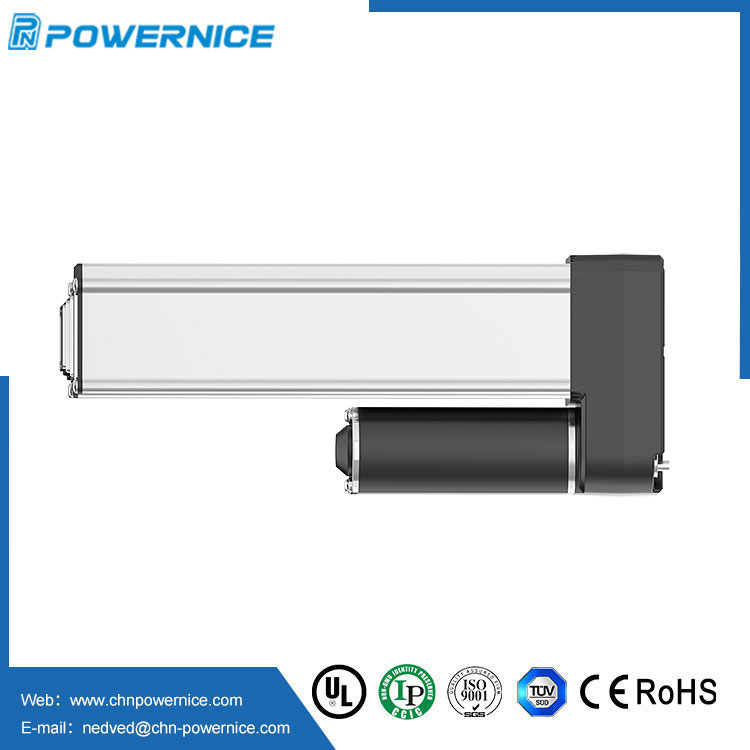Revolutionizing Kitchens: How Kitchen Equipment Linear Actuators Enhance Functionality and Efficiency
2024-05-21
In the ever-evolving world of kitchen technology, the quest for improved functionality and efficiency is relentless. Among the innovative components driving this change is the Kitchen Equipment Linear Actuator. These powerful devices are transforming the way kitchen appliances operate, offering seamless automation and precision that cater to both home cooks and professional chefs. Let's explore how linear actuators are revolutionizing kitchen equipment and enhancing our culinary experiences.
1. Streamlining Operations with Automation
One of the primary benefits of linear actuators in kitchen equipment is the automation they bring to everyday tasks. Imagine opening and closing cabinet doors or adjusting shelves with just a button press. Linear actuators make this possible by providing smooth, controlled movement. This automation streamlines kitchen operations, reducing manual effort and saving time. Automated systems are particularly beneficial in commercial kitchens, where speed and efficiency are paramount.
2. Enhancing Accessibility and Ergonomics
Kitchens are busy spaces where accessibility and ergonomics can significantly impact workflow. Linear actuators improve accessibility by enabling the adjustment of countertops, cabinets, and appliances to the ideal height for any user. This adaptability is crucial for reducing strain and enhancing comfort, particularly in multi-user kitchens. By allowing users to customize their workspace, linear actuators contribute to a more ergonomic and user-friendly environment.
3. Optimizing Space Utilization
In both home and commercial kitchens, maximizing available space is essential. Linear actuators help achieve this by enabling hidden storage solutions and pop-up mechanisms. Appliances can be stored out of sight and brought to the countertop when needed, preserving valuable workspace. This not only keeps the kitchen organized but also ensures that essential tools and appliances are easily accessible, promoting a more efficient cooking process.
4. Improving Precision in Cooking
Precision is key in achieving consistent culinary results. Linear actuators play a crucial role in advanced cooking equipment by providing exact control over movements and settings. For instance, in sous-vide machines, linear actuators ensure precise immersion of food in water baths, maintaining consistent temperature and cooking times. This level of precision is invaluable in professional kitchens, where consistency and quality are paramount.
5. Enhancing Safety Features
Safety is a top priority in any kitchen, and linear actuators contribute significantly to this aspect. Automated systems reduce the need for manual handling of heavy or hot equipment, minimizing the risk of accidents. For example, automated oven doors and lifting mechanisms for appliances reduce the risk of burns and physical strain. Additionally, waste management systems powered by linear actuators enhance hygiene by providing hands-free operation, reducing contamination risks.
6. Boosting Energy Efficiency
Energy efficiency is an important consideration in modern kitchens. Linear actuators help optimize energy use by enabling precise control over appliance operations. Automated doors and drawers, for instance, ensure minimal heat loss in ovens and refrigerators, maintaining optimal temperatures with less energy. This not only reduces energy consumption but also extends the lifespan of kitchen appliances, providing cost savings over time.
7. Facilitating Smart Kitchen Integration
The rise of smart kitchens is driven by the integration of advanced technologies, including linear actuators. These devices can be seamlessly integrated with smart home systems, allowing for remote control and automation of kitchen equipment. Voice-activated and app-controlled mechanisms bring a new level of convenience and efficiency, enabling users to control their kitchen environment with ease. This integration also allows for the collection of data, helping to optimize appliance usage and maintenance.
Conclusion
The incorporation of linear actuators in kitchen equipment is revolutionizing the culinary landscape. By enhancing functionality and efficiency, these devices are transforming everyday kitchen tasks into streamlined, automated processes. From improving accessibility and ergonomics to boosting safety and energy efficiency, linear actuators are at the forefront of kitchen innovation. As technology continues to advance, we can expect even more sophisticated applications of linear actuators that will further elevate our cooking experiences and redefine modern kitchen design.



